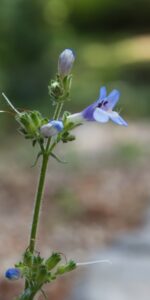May is one of the most reliably beautiful months to explore Hoyt Arboretum. Many trees are in flower, our broadleaf and deciduous species are leafed-out, and sunny days are more common.
The Visitor Center is open daily from 10am-4pm. Please stop by to say hi, grab a map (available in English and Spanish), and get recommendations on where to go. Please note that with sunshine and beautiful weather, the park and parking lots are busier. See our Plan Your Visit page to arrive prepared.
This month at Hoyt Arboretum


Tree Transformation Card Readings May 24, 2025 at 1:00 pm – 3:15 pm
Trees of South America May 31, 2025 at 10:30 am – 12:00 pm
TOUCH GRASS May 31, 2025 at 12:00 pm – 2:00 pm
Tai Chi: Introduction to Better Balance June 2, 2025 at 2:00 pm – 3:00 pm
Basic Principles: Tai Chi & Qigong June 4, 2025 at 2:00 pm – 3:00 pm
Basket Making with Western Redcedar June 7, 2025 at 10:00 am – 4:00 pm
Basket Making with Western Redcedar June 8, 2025 at 10:00 am – 4:00 pm
Registration is required. Click the class links to sign up.
Public Tours Are Back!


Explore the trees and trails of Hoyt Arboretum with a knowledgeable guide. Throughout the seasons, we’ll feature one of three our nationally-accredited collections.
Magnolia Collection: April 6 – June 15
Conifer Collection: June 22 – September 21
Maple Collection: September 28 – October 26
Every Sunday at 11am.
Sign up in person, day-of at the Visitor Center.
Trees to See:
Dogwoods, the genus Cornus


Spring has arrived, when the dogwoods “bloom”, though their showy white and pink flowers are actually specialized leaves, and not flowers at all! The true flowers of the dogwoods most common to Portland are small and greenish yellow, surrounded by the colorful bracts. The familiar pink and white dogwoods are mostly varieties of Cornus florida, a native to the eastern U.S. Some cultivars have variegated leaves, adding to their interest in summer once their spring color has faded.
Location: Vietnam Veterans Memorial
Dawn Redwood, Metasequoia glyptostroboides

The dawn redwood is a “living fossil”, thought to be long extinct until it was rediscovered in the 1940s in the wilderness of China. Hoyt Arboretum’s famous dawn redwood is at the end of Bray Lane. It was the first dawn redwood to bear cones in the Western Hemisphere in over 8 million years! The modern dawn redwood is identical to its fossil ancestors from 65 million years ago. This unique conifer loses its needles each fall; you’ll see its new, bright green needles reappearing in the spring.
Dove Tree, Davidia involucrata


This moderately fast-growing tree, also known as the Handkerchief Tree or Ghost Tree, can reach 60 to 80 feet tall, but can take a decade to reach flowering size. A native of China, it was named after the French missionary and botanist Armand David (Davidia involucrata), who obtained specimens of the tree for the French government in 1896. In full bloom, the elegant, white flower-like bracts dangle and dance among the branches like doves. As the season progresses, the leaves turn yellow, orange, and red.
Location: Maple Trail, western part of the trail
Stay Up-To-Date with Hoyt Arboretum!
Subscribe to our email newsletter
AND
